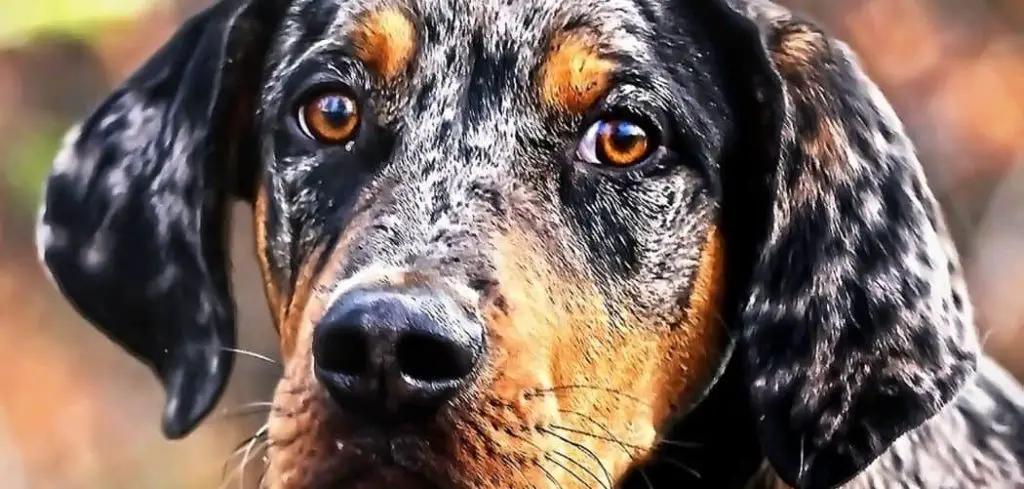Panting is a normal behavior in dogs, often linked to cooling down or excitement. But when your dog is panting with no other symptoms, it can leave you feeling uncertain about whether it’s harmless or something to worry about.
Some cases are completely normal, while others may signal an early health issue that hasn’t yet shown additional signs.
We outline the common causes of dog panting with no other symptoms, what you can do at home, and when to seek veterinary help.
Dog Panting No Other Symptoms — Why It Happens
Panting without other symptoms can be perfectly normal in some dogs, but it can also be an early warning sign of an underlying condition. Dogs may pant simply to regulate body temperature, after exercise, or due to excitement. However, it can also point to early heart disease, pain, or even hormonal imbalances. Environmental factors like heat or stress can also play a big role.

Dog Panting No Other Symptoms: Common Causes
Heat and Temperature Regulation
One of the most common reasons for panting without other symptoms is simply cooling down.
Dogs don’t sweat like humans; they release heat through panting. If your dog has been in a warm environment or recently exercised, panting may be completely normal.
However, owners should be cautious, as excessive panting in warm conditions can also lead to heat stress.
Read more: Dog Panting Excessively and Restless (Why it happens)
Anxiety or Stress
Panting can be a subtle sign of stress, even without obvious triggers like shaking or whining.
Dogs may pant when traveling in a car, meeting new people, or being left alone. If the panting occurs mostly in specific situations, anxiety could be the underlying cause.
While occasional stress panting is usually not dangerous, chronic anxiety can affect your dog’s long-term wellbeing.
Pain or Discomfort
Sometimes panting is an early and quiet indicator of pain, even before limping, whining, or other symptoms show.
Dogs experiencing mild joint discomfort, dental pain, or internal issues may pant as a coping mechanism.
Since they can’t tell you they’re uncomfortable, panting may be the only clue. If the panting seems unusual or prolonged, a vet check may be necessary to rule out hidden pain.
Heart Disease
Heart problems often start with subtle signs. Panting may appear before coughing, lethargy, or exercise intolerance become obvious.
If your dog is panting at rest or at night without other clear symptoms, it may point to early cardiac disease. Detecting this early is important because heart conditions can progress quickly without intervention.
Cushing’s Disease (Hyperadrenocorticism)
Cushing’s disease, a hormonal disorder common in older dogs, can cause persistent panting even before other signs like increased thirst, hunger, or hair loss appear.
The excess cortisol produced in this condition interferes with normal metabolism and often leads to panting as one of the first noticeable changes.
Since it develops gradually, panting may be the earliest symptom.
Medication Side Effects
Certain medications, especially steroids, can cause panting even if the dog seems otherwise fine. If your dog recently started a new medication and you notice panting as the only change, this may be a side effect.
It is usually not dangerous but should be monitored and reported to your vet in case dosage adjustments are needed.
What to Do If Your Dog Is Panting With No Other Symptoms
If your dog is panting but otherwise acting normally, start by considering their environment. Were they just exercising?
Is the room warm? If yes, the panting may simply be a cooling mechanism. Make sure they have access to fresh water and a cool, shaded space.
If panting happens mostly in stressful situations, helping your dog feel more comfortable can reduce the behavior. Providing a safe, quiet environment or using calming aids may help.
When panting seems unusual for your dog, even without other symptoms, it’s best to observe closely. Track when it happens, how long it lasts, and whether it seems linked to certain activities or times of day. This information is very useful for your vet.
Avoid assuming panting is harmless, especially if it happens at rest, at night, or becomes frequent. Dogs often show symptoms subtly, and early detection can make a big difference in treatment outcomes.
When to Call or Visit Your Vet
Panting may seem normal, but there are situations where a vet visit is important. If your dog is panting heavily in cool conditions or without exercise, it could be more than just temperature regulation.
If panting becomes constant, occurs at night, or seems to appear without any trigger, it could signal heart disease, Cushing’s, or another internal issue.
You should also seek veterinary advice if your dog is older and showing unexplained panting. Age increases the risk of conditions like heart disease and hormonal imbalances, where panting is one of the first signs.
Any panting that seems labored, noisy, or paired with subtle changes like restlessness, reduced appetite, or sleeping more should prompt an appointment with your veterinarian.
Read more: Dog Drooling No Other Symptoms (What it means for your dog’s health)
Key Takeaway
Panting with no other symptoms is not always a cause for alarm, but it’s something you shouldn’t ignore. While it may simply reflect heat, activity, or excitement, it can also be the earliest sign of underlying health issues like heart disease, pain, or hormonal disorders.
As a pet owner, monitoring your dog’s patterns and being attentive to changes is the best way to catch problems early.
If you’re unsure, contacting your vet for reassurance or an exam is always the safest path.
